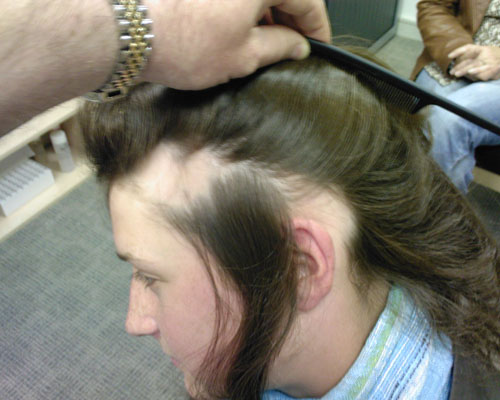What is Alopecia Areata - causes and symptoms

Alopecia Areata is a form of HAIR loss (ALOPECIA) that results from an autoimmune disorder in which the IMMUNE SYSTEM attacks clusters of hair follicles, halting hair growth. The clusters typically appear as circular patches of hairless SKIN, which are most noticeable when they occur on the scalp though can occur anywhere on the body. Hair growth within the affected follicles may remain interrupted for months to years; the timing and pattern of attacks seem to be random. Hair growth will eventually resume without treatment, though sometimes years after symptoms first begin. The extent of hair loss varies widely among individuals, ranging from a few isolated patches to the entire scalp or total body. Some people also experience small pits, called stippling, in their fingernails and toenails. Alopecia areata can affect people of any age and is more common in people who have other AUTOIMMUNE DISORDERS.
Researchers suspect an interaction between genetic and environmental factors is responsible for alopecia areata, though they do not yet understand the precise mechanisms. Alopecia areata does not affect health in any way other than hair growth; however, the cosmetic result (particularly scalp involvement) often distresses people who have the condition.
Alopecia Areata Treatment
Treatments to stimulate follicle activity sometimes can restore normal hair patterns when hair loss is mild to moderate. Cosmetic solutions such as wigs or hairpieces may produce more satisfactory results than medical interventions when the affected areas are extensive.
| Therapies for Alopecia Areata | |
|---|---|
| site-specific cortisone injections | oral CORTICOSTEROID MEDICATIONS |
| topical minoxidil | topical IMMUNOTHERAPY |
| topical anthralin | wigs and hairpieces |
See also PSORIASIS.